The time when most people used straw and firewood in cooking has gone. The terra cotta stove which used to be a familiar object has also been disappearing in the market. This may be the reason for the terra cotta stove making workshop of Nam Tiep near Rach Cay Bridge – the last one of its kind – popular for its uniqueness in gorgeous Saigon (present-day Ho Chi Minh City).
During the 70s, when firewood was the main fuel used in households, stove making was pretty popular. At that time, there were about 30 workshops producing terra cotta stoves in the city.
Nowadays, urbanization has decreased land for production and most people living in the cities have switched to gas or electric stoves. However, the demand for terra cotta stoves in the countryside is still considerable. That helps secure the livelihood of stove makers in Nam Tiep’s workshop.
Situated near Rach Cay Bridge on Vo Van Kiet Avenue (Ward 16, District 8, Ho Chi Minh City), the terra cotta stove making workshop of Tran Van Tiep, who is often called Nam Tiep, is the only workshop that produces terra cotta stoves in Ho Chi Minh City. His products are mainly sold in rural areas in the southeast, the central highlands, and the southern central region.
Talking about his job, Tiep said: “Doing this job, we are relentlessly working with soil. An apprentice needs up to ten years to be a competent stove maker. One should be very much in love with the profession to do it.”

The Nam Tiep terra cotta stove making workshop owned
by Tran Van Tiep is located near Rach Cay Bridge on Vo Van Kiet Avenue.
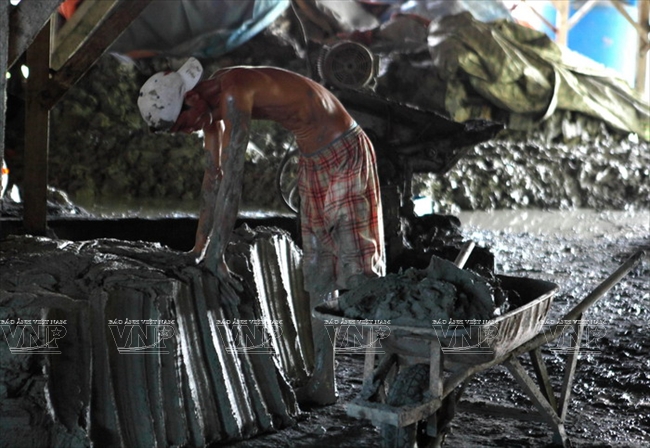
Now few people are engaged in the hard work.

Clay is mixed with coal to make stoves.
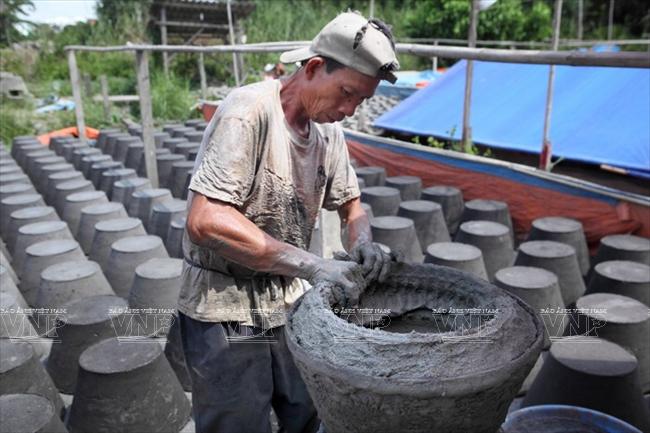
Forming the stove is the most difficult stage of stove making and only senior workers can do it.
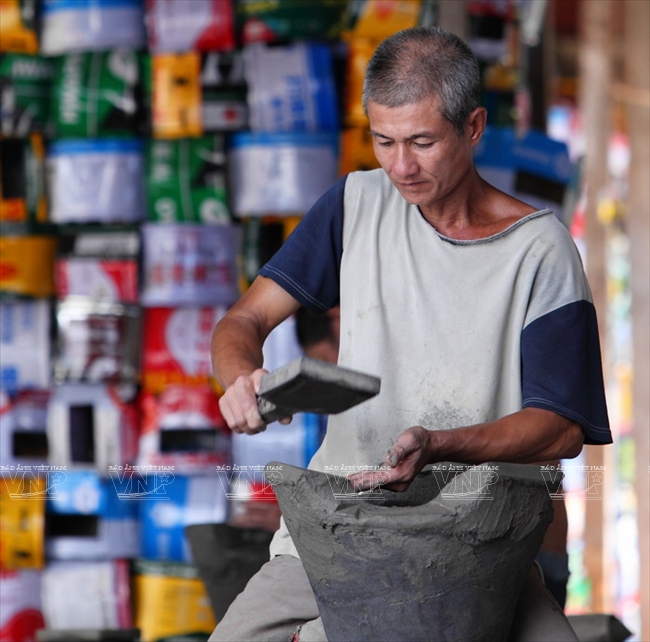
Forming 3 knobs on the stove.
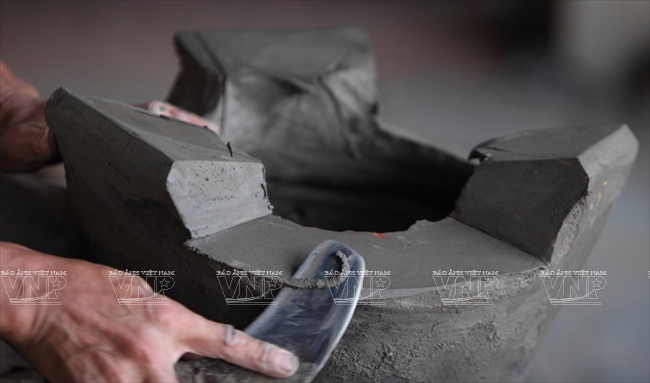
Eliminating extra parts to finalise a stove.

Stoves are sun dried before baking.
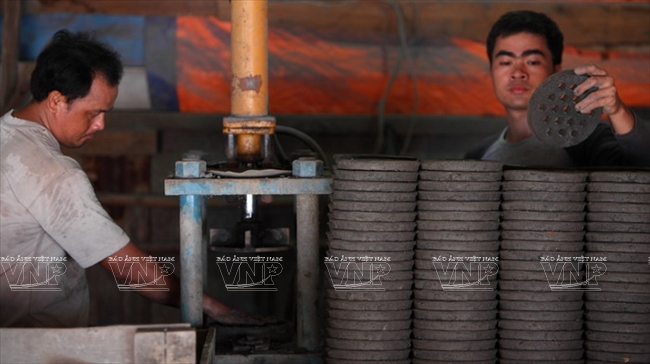
A stove’s grates are formed by machine to save time and labour.

Completely cover the stove before baking.

A stove’s grates are placed alternately together with stoves to save space in the kiln.
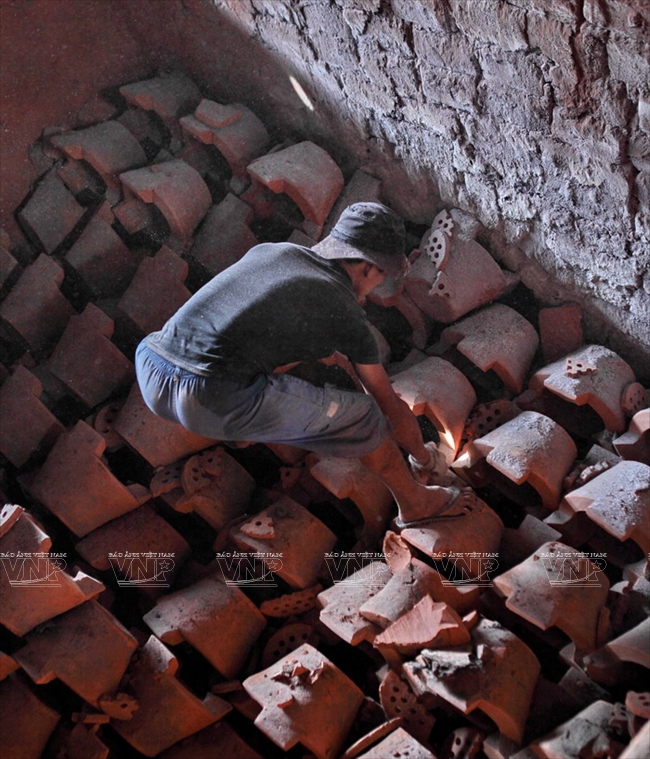
Stoves are baked in 2 days and a night.
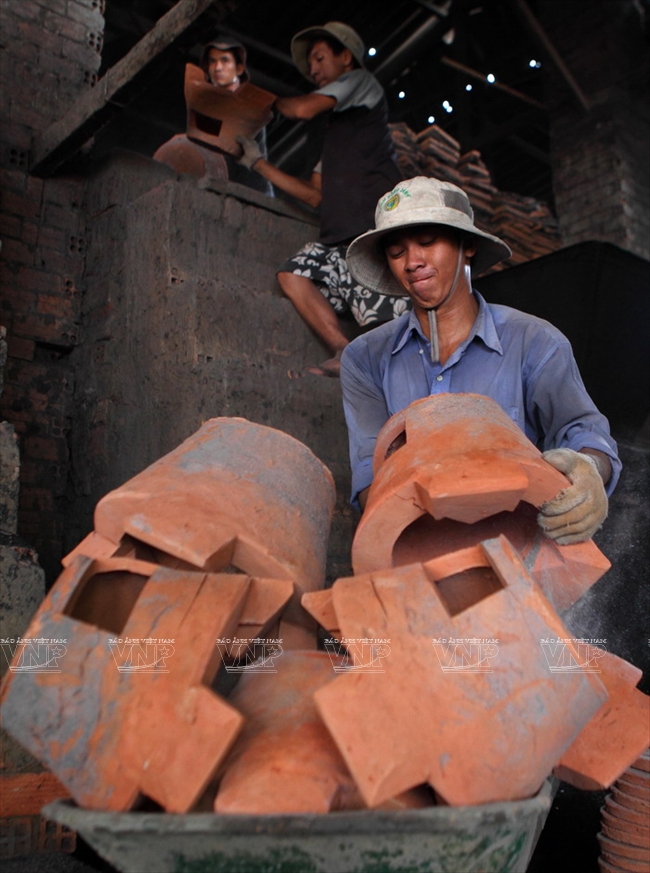
Newly baked stoves are bright red.
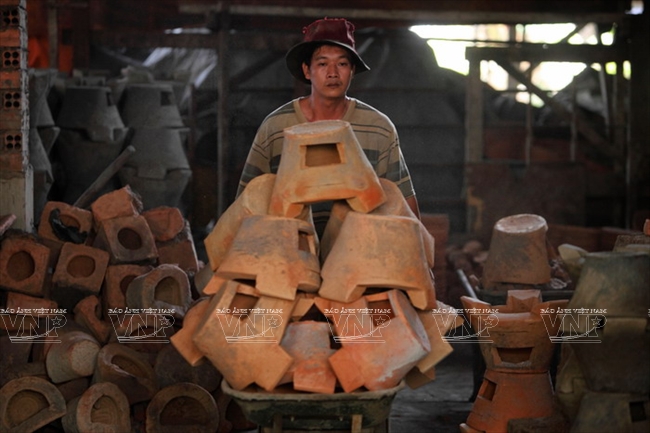
Moving baked stoves into the store.
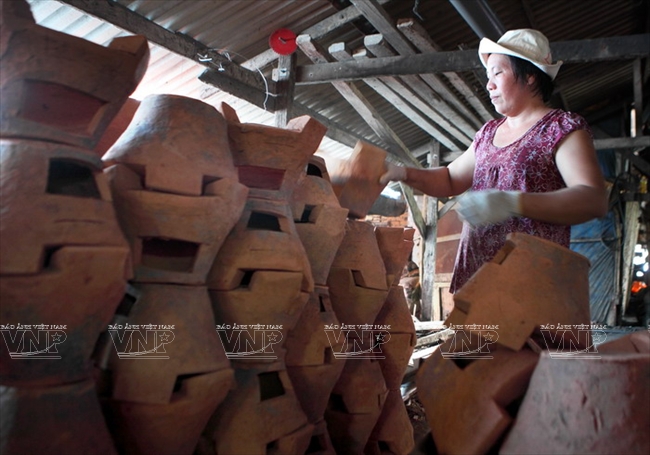
Each month Nam Tiep’s workshop produces about 4,000 terra cotta stoves

Preparing aluminium coating for stoves.
Nam Tiep with finished stoves
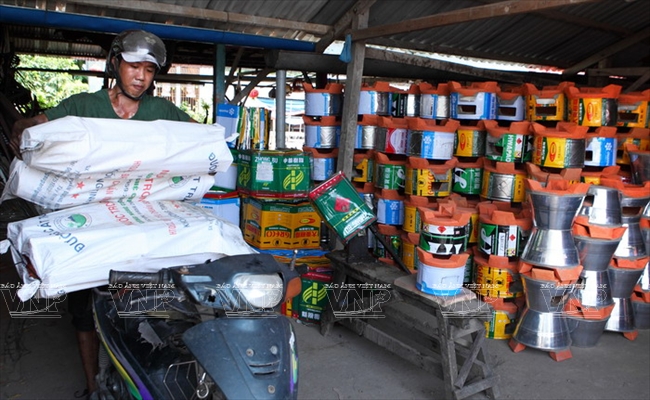
The main markets for stoves of Nam Tiep’s workshop is south eastern provinces,
the Central Highlands, south central region, especially Binh Thuan, Ninh Thuan and Khanh Hoa provinces. |
Making terra cotta stoves is not easy at all. One needs to mold clay into the shape of a stove with 3 knobs on top before baking it. Stove forming is the most challenging and demanding stage. A layer of a release agent is put in the mould before clay is poured in. Then, the makers have to continuously press, squeeze and pull the clay while moving around the mould to make the clay stick to the mould. After that, the mould is turned upside down and the stove is gently taken out. It will then be sun dried for a couple of days before being adjusted to perfection. Baking stoves lasts two days and one night. The baked stove is covered with a layer of aluminum to avoid breaking during transportation and use.
At the present time, Tiep’s workshop has over 40 employees, including 10 senior workers, the others are apprentices or in charge of loading, transporting, and supporting the stove makers. Each month, his workshop produces 4,000 stoves which are sold for 30,000 dong or more.
Facing the difficulties of the craft, the last terra cotta stove makers in Ho Chi Minh City still continue in their trade.
Story: Nguyen Oanh – Photos: Nguyen Luan
bdAnh